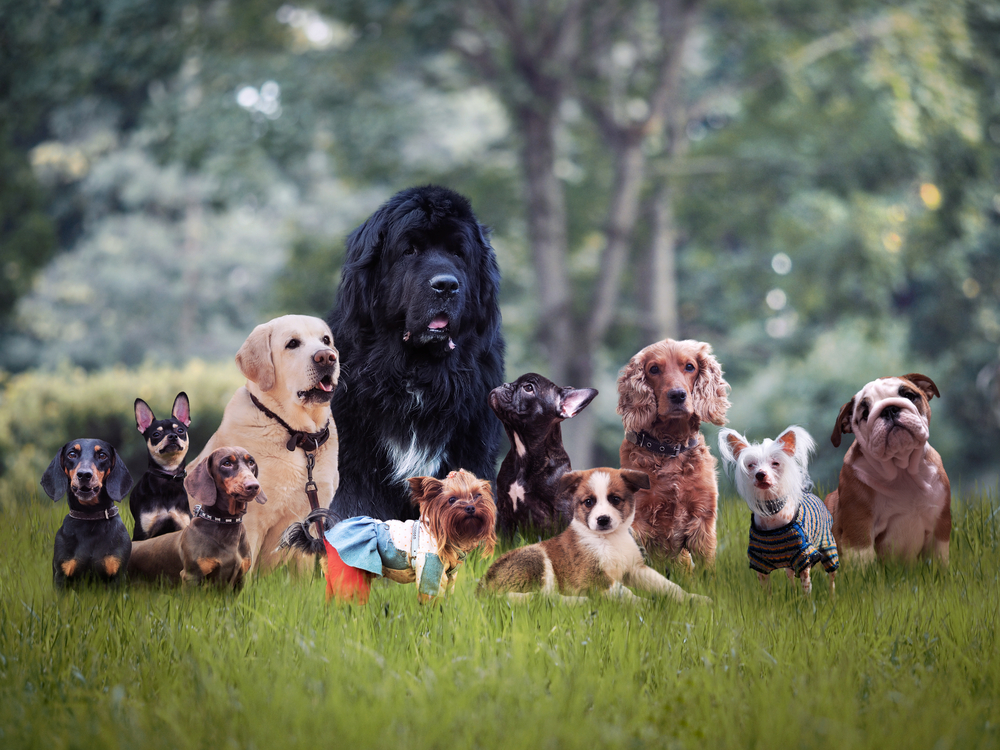The Origins of 10 Dog Breeds and What They Were Bred to Do

How did we end up with so many dog breeds? Man domesticated dogs roughly 15,000 years ago and they have been man (and woman’s) best friend since. Dogs roamed with us as protectors and to ward off other wildlife and would-be intruders. They also kept rodents and other pests away. Of course, they quickly became our companions, tried and true.
What about the many dog breeds we see today; why do we have so many and why were some of them bred to do certain “jobs”? The team at Oakland Veterinary Referral Services is glad you asked.
One Dog Species, So Many Breeds
All dogs, in their wonderful variety, are from the same species, Canis lupus. More than 400 breeds exist worldwide although only 178 are officially recognized. Dog breeds have multiplied fairly rapidly through man’s intervention rather than over long periods of time through natural selection. Humans have bred many varieties of dogs to suit us. At first, it was to perform a certain job for our benefit. Since the 1800’s, we’ve focused on breeding for appearance and personality or to fine-tune behavior.
When we want a certain characteristic in a dog, we breed two dogs with those traits and continue breeding those offspring until the new trait is a distinct characteristic that distinguishes them from their original breed.
Jobs and Origins of These Dog Breeds
Here are a few dog breeds we chose to spotlight and the jobs we bred them to do:
- Poodle — Despite its looks, the elegant poodle had jobs once. Poodles were a companion to hunters and we bred them to retrieve birds in dense woods, marshes, and lakes. Because they had to get into the water, we cut their coats in such a way to alleviate the heaviness of the hair, but leave enough fur to keep them warm.
- Bloodhound — Sherlock Holme’s favorite companion, this ‘super scenter’ was first bred in an 8th-century monastery in Belgium. They were the select dog for hunters due to their impeccable nose-sleuthing abilities.
- Pointer — These 17th-century dogs came from Spain as hunting dogs. An interesting trait of pointers is that we bred them to seek out but not kill birds. This trait was bred into them for hunters who wanted them to locate downed birds and retrieve them alive.
- Basset Hound — This adorably funny dog breed with its short legs and long ears can be linked to St. Hubert, a Belgian monk who lived in the 1880s. These short-legged hounds became hunting companions to sniff out ground prey.
- Corgi — This meme-worthy dog breed of social media popularity is prized for its impeccable herding abilities. Their low stature is excellent for zipping between sheep and goats to bring them back to the pen.
- Pug — Pugs date back to the 16th century in China where they companion dogs to royalty. We later imported them to Europe as pets. In fact, pugs were one of the first dogs we bred specifically as pets.
- Saint Bernard — This giant, slobbery dog originated in the Swiss Alps where they were rescue dogs. Their thick coats and muscle structure make them perfect to deal with high altitudes and cold weather.
- Greyhound — Greyhounds, the fastest of all dogs, came out of Europe. Their elongated bodies and short digestive tracts are ideal for speed and agility. Thought to come from Egypt (as they look like dogs painted on ancient murals), DNA suggests that they came along later, in Europe. Popular during Medieval times as “sight dogs”, this breed continues to be adored for their grace and speed.
- Dalmatian — The iconic firehouse dog was likely first bred in Croatia, in the Dalmatia region, in the 17th century. Their original “jobs” are varied, since they were hunting dogs, guard dogs, and, of course, companions. The reason behind their connection with firehouses is that they have an uncanny affinity to get along with horses, which used to pull the water trucks in fire emergencies.
- Pomeranian — This fluffy lap dog is a member of the Spitz family which includes a wide variety of mixes, like Welsh Corgi, Akita, and Malamute. An interesting side note is that Queen Victoria of England is largely responsible for the Pomeranian. She wanted smaller dogs and continued to breed until they became what is now the standard in Pomeranian size and appearance.
We hope that you enjoyed uncovering the backgrounds of these popular dog breeds. No wonder many pet owners have favorites. Still, we at OVRS love them all. To schedule a consultation or appointment for your favorite breed, please give us a call.


